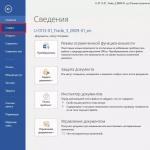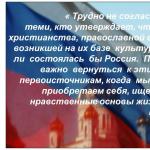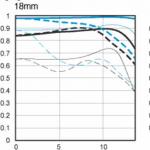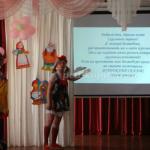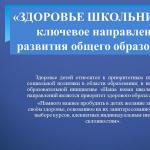Printing on various surfaces. Print technologies. The easiest way to transfer any image to fabric or wood Printing on glass and ceramic surfaces
UV printing (or UV printing) is a technology for applying a full-color image to business gifts and promotional products. Most often, for advertising purposes, direct UV printing is used on plastic: key chains, flash drives, lighters, flashlights, pens. In addition, the method is widely used for applying to diaries, award steles and gift wrapping.
UV printing on souvenirs: price and photo
UV printing technologyUV printing is a type of direct printing using UV curable inks. Special ink under the influence of ultraviolet radiation passes into a solid state and, without being absorbed, adheres tightly to the base.
UV printing on flat surfaces
Almost any flat and smooth surface of a souvenir is suitable for application - UV-curable ink fits equally well on wood and metal, plastic and artificial leather. Select this printing method if you want to imprint batteries, diaries, reflectors, clips and pen cases, etc.











UVR Circular UV printing
The method has proven itself when printing on cylindrical surfaces made of various materials - plastic, glass, metal. It is possible to seal in full color thermoses and thermo mugs, glasses, water bottles. Technological limitation - the body must be a regular cylinder, without narrowing and thickening.









Advantages of UV printing on souvenirs
UV printing is more expensive than pad printing and one-color silkscreen printing. However, UV printing on plastic has a number of important advantages.
- photorealistic image;
- resistant UV printing on souvenirs;
- large application area;
- Possibility of producing small quantities.
UV printing, unlike tampon printing, allows you to apply a clear, high quality full-color image with a resolution of up to 1140x1200 dpi to objects, which makes the gift brighter and makes it stand out from the others. The photorealistic image looks organically on the gift, as if it was created together with the product itself.
It should be noted that it is impossible to select colors according to the Pantone scale when applying UV printing, since in this case the CMYK color model is used. To apply a logo in one or more Pantone colors, choose pad printing.
Permanent applicationIn terms of durability, UV printing is comparable to pad printing and is therefore ideal for branding souvenirs. Under the influence of ultraviolet radiation, the paints are tightly fixed on the base, and you can not be afraid that the paint will lie unevenly or wash off over time.
Large application areaUV printing allows you to create images that fill the surface of the product as much as possible - for example, lighters or flash drives. The absence of technological restrictions allows you to seal large areas almost to the edge, creating a unique design for the cover of a diary or packaging box.
UV printing practically does not require preparatory work and does not involve initial costs, so the minimum print run for this type of application is 1 pc. This is one of the fastest printing methods, but it must be borne in mind that the production of products with a large print area takes time.
How to order UV printing on pens, flash drives and promotional products
Use the calculator on this page to calculate the cost of UV printing your logo, or select an item from the catalog and calculate the full value of the gifts with your logo in your shopping cart.
Ordering gifts for your company? Send us a basket with the calculation, and we will transfer the order to one of the official dealers of "Project 111" in your city. The dealer company will fulfill it accurately and on time.
Read more about placing orders in the "Project 111" in the "" section. And in the "" section you can get answers to frequently asked questions.
High-quality silk-screen printing services in Moscow. Screen printing from 1 piece or in bulk. Order silkscreen printing on any product. We even take on urgent jobs.
silkscreen, or screen printing- This is an image application method that uses a stencil in the form of a fabric or metal mesh. In this way, you can apply an image to almost any surface. Therefore, screen printing is often used to make souvenir products– e.g. mugs, T-shirts, pens or bags.
Our printing house offers custom silkscreen printing services for all of its clients. We will quickly and inexpensively apply your image on sheets of material or on finished products. We accept both private and wholesale orders, we carry out them qualitatively and inexpensively.
Why you should order from us
- Price and quality. Our printing house guarantees high-quality and prompt production of any orders at a low price.
- Print on any surface. We will be able to apply the image by screen printing on the surface of any material - from fabric and wood to plastic and metal.
- Professional approach. For screen printing, we use modern equipment and specialized inks - due to this, the image will be durable and of high quality.
- Various solutions. Our printing house can apply any image on all popular types of souvenirs
- Delivery. We can also deliver the finished order to any address in Moscow
- Verified by clients. More than 500 customers from all over the city were satisfied with our services
How much does screen printing cost
The cost of screen printing is determined by many order parameters. Basically, this is the size and complexity of the image, the type of surface on which it needs to be applied, the circulation, and many others. For the production of an order in an accelerated mode, you will need to pay extra separately. The table below shows approximate prices for silk-screen printing in our company:
Pros and cons of screen printing
The main advantage of screen printing is its versatility. The peculiarity of this technology allows you to apply an image to products of various shapes and sizes, with a smooth, rough or textured surface. The image is very stable and durable. You can use a variety of inks for printing, including fluorescent or reflective inks.
At the same time, screen printing is much more complicated than other methods of applying an image, it will require more time and materials. Image resolution with this method may be lower than, for example, with UV printing. She will not be able to convey halftones or a gradient. Therefore, silk screen printing may not be suitable if you need to apply a complex pattern with a large number of small details.
- on any surface immediately
- We apply on ready-made bags, on flash drives, on ready-made plastic cards, on colored papers, on folders, on pens, on rubber surfaces, on envelopes, on glasses, on plates, on mugs, on spoons and forks, on plastic bags, on all types business of souvenirs, clothes, cars (temporary application of temporary car paint is also possible), walls, floors, carpets, furniture, mirrors…. On any surface!
- Free delivery of finished products in Moscow
- Free self-delivery of products for application
- Deadline from 1 day
Logo application cost
The price depends on the type of product and the applied image. Send your layout and get a prompt calculation of the application. The minimum order for applying a logo is 3500 rubles
Where can the logo be applied?
- on envelopes
- paper and plastic bags
- pens, lighters, key rings
- mugs
- T-shirts, corporate clothing, towels
- diaries
- umbrellas
- corner folders, paper folders
- postcards and diplomas
- for any paper products
- for plastic, glass, rubber, leather, leatherette
Possible ways of applying the logo
- silk screen printing
- pad printing
- direct digital printing on finished products
- laser engraving
- application
- sublimation
- thermal transfer
- UV printing
all application methods are available! depending on the type of product and the number of colors in the logo, the method of application is selected
Put the logo on the flash drive

We put the logo on the finished fresnel lenses

put the logo on ready-made bags of efalin using the thermal transfer method

logo on envelopes
another pack)
put logo on key rings
print on T-shirts
towel embroidery
direct printing on corporate clothing
printing on pens
Opportunities today printing technologies have expanded so much that you can print images, graphics and text on a wide variety of surfaces. As a material for printing, not only ordinary paper or cardboard is now suitable, but also polyethylene film, textiles, ceramics, glass and metal. This or that material requires the choice of the most optimal printing method. In this article, we will talk about how printing is carried out on a variety of surfaces, and list the main printing technologies used to produce various printed products.
Drawing a pattern on fabric
Printing on a fabric surface is the application of drawings and inscriptions to T-shirts, bags, baseball caps and other products. You can apply pictures and inscriptions on textiles using a variety of printing technologies, but the most popular technology is sublimation and direct digital printing. Sublimation involves the full-color application of a variety of patterns on textiles that are resistant to sunlight, temperature fluctuations and washing.
Textile printer DTX-400 for printing on textile surfaces
This is a popular technology used for branded textiles. The image is applied to the fabric without loss of quality and color brightness, while it is characterized by resistance to abrasion and mechanical damage. Sublimation is the process of thermal transfer of an image or inscriptions onto a flat and easily accessible fabric surface, when, ultimately, the image is "inside" the product itself. During sublimation, the fabric surface on which the pattern is applied withstands short-term exposure high temperature- up to 190 degrees, due to which the image is “fixed” on textile products.
Sublimation printing technology allows you to apply an image on the surface of the fabric with a wide colors and, thus, to obtain a picture on textiles of the highest photographic quality. In addition to this, the process of such thermal transfer itself does not take much time and is relatively simple. Sublimation is suitable for printing both small and large volumes. It allows not only printing on textile surfaces, but also transferring patterns to ceramic products, fiberglass and even wooden surfaces, if they are pre-coated with a certain composition. But as far as fabrics are concerned, sublimation printing only suitable for textiles containing more than 50% synthetic fibers.
Direct digital printing is also widely used for printing pictures and inscriptions on fabric surfaces. This printing method provides that the textiles are first impregnated with a special composition, which, when applying the image, prevents the ink from “spreading” along the fibers. This results in high-definition printing and drawing at resolutions up to 720 dpi. The product made using this method is characterized by excellent resistance to light, abrasion and everyday washing. The palette of colors used in direct digital printing is very wide, which makes it possible to print almost any image, logo or symbolism.
Leather, metal and wood surfaces
The so-called mesh screen printing or silk screen printing has a wide range of possibilities. It can be used to print on metal and wood surfaces, artificial and genuine leather, self-adhesive film. Silk-screen printing is nothing more than a development of the usual stencil used for decorative painting of walls and textiles. The principle of printing is as follows: colorants are simply pressed through a fine-meshed mesh on a stencil, and one paint is applied for one such rental. Given the peculiarities of the technology, silk screen printing is mainly used for printing on flat surfaces of various materials. At the same time, the size of the applied pattern is limited by the dimensions of the stencil mesh itself.
 Kincolor UV1209C - printer for printing on metal, glass, wallpaper, leather, acrylic plastic
Kincolor UV1209C - printer for printing on metal, glass, wallpaper, leather, acrylic plastic Images applied to metal or wood by silk-screen printing are resistant to light and aggressive environments. With the help of silk-screen printing, you can print the scales of electrical appliances, apply bright patterns on the surface of leather products, fill rough forms with a thick layer of paint. Here it is possible to use a wide range of printing inks on certain binding materials. There is only one requirement for the paints used - they must not destroy the material of the stencil itself ( synthetic materials or metal) and not dry fast enough to ensure a stable printing process.
For printing on metal, leather and wooden surfaces, a specific vector layout is initially created using the silkscreen method. Then, a special film is produced, on which a model for illumination is located. This patterned film is applied tightly to the stencil and placed under a bright light source. At the next stage, the stencil is illuminated, after which the stencil mesh becomes suitable for drawing a pattern directly on the surface of metal or genuine leather.
Another common way to print on difficult surfaces like wood, metal or leather is pad printing. This method first began to be used in Switzerland for marking when creating watches, but in the 20th century it became much more widespread due to the advent of special pad printing machines. If screen printing is more suitable for products with a smooth surface, then pad printing is used for the production of various products with uneven surfaces.
The pad printing method is based on the following process: the ink is transferred from the printing plate to the surface by means of a special pad. This tampon is made of a fairly elastic, elastic material. He descends onto the printing plate and takes some of the ink with him, while strictly observing the dimensions of the image. Next, the swab is pressed tightly against the printed surface, ensuring the transfer of the image. Here, the quality of the finished print directly depends on the quality of the plate used, which is usually made from steel or photopolymerizable plates.
The use of a tampon with elastic characteristics allows this technology to work with a wide variety of surfaces. Suffice it to mention that pad printing is used in radio electronics and instrumentation for marking or decorating a wide range of products. When there is a need to print a pattern on three-dimensional products with complex geometry, uneven, concave or convex surfaces, pad printing is the best option. In addition to metal, leather and wood products, pad printing allows you to apply images and inscriptions on rubber, porcelain, glass, plastic and cardboard surfaces. On top of that, is it also a very cost-effective way to print? often used, for example, to decorate or personalize souvenirs. The only disadvantages of the technology are the impossibility of printing very small layout details and using more than five colors at the same time when printing.
Polyethylene surfaces
Plastic bags are widely used today for product protection or packaging, and as a practical marketing tool. Such packages often act as handouts or packaging for souvenirs at exhibitions and presentations. In fact, different printing technologies are suitable for applying a pattern to polyethylene surfaces, but two methods are most often used - this is the already mentioned screen printing and flexo printing. Screen printing is usually used when it is necessary to print a small number of plastic bags (up to five thousand pieces) with the possibility of applying multi-color images. Moreover, it is possible to apply images and inscriptions both on one and on both sides of the package. In turn, flexo printing is used when it is necessary to print significant volumes of polyethylene products.
 Printer Matan Barak iQ 3 - printing on polyethylene, self-adhesive film, banner, mesh
Printer Matan Barak iQ 3 - printing on polyethylene, self-adhesive film, banner, mesh Flexo printing involves the use of special embossed printing forms, which are distinguished by elasticity and elasticity. With the help of such a form, covered with an ink layer, the image is transferred during the printing process directly onto a plastic film or other surface. A feature of this printing technology is the ability to apply pictures and inscriptions on non-porous surfaces, which makes it possible to use flexo printing in the production of plastic bags. Other equally common areas of application for flexo printing are printing on gift wrapping, wallpaper, newspaper and magazine inserts.
Printing on glass and ceramic surfaces
One of the popular methods for decorating ceramic mugs, as well as other ceramic, porcelain and glass products, is the decal. As you know, beautiful mugs with corporate symbols are not only a memorable gift, but at the same time effective advertising. Decaling ensures the application of a logo or pattern on ceramic, glass and porcelain surfaces in the following way: first, the pattern is printed on paper, and then transferred to the desired material, followed by firing. This technology, in comparison with sublimation or pad printing, guarantees a higher stability of the applied image and makes it possible to print on surfaces of various shapes. With the help of decolouration, you can create elegant piece products made of ceramics or porcelain, including those with the application of the original pattern in gold or silver. In recent years, this printing technology has gained immense popularity due to the possibility of making colorful souvenirs. After all, what modern office can do without ceramic mugs with a company logo printed on them? Subject to certain rules a pattern printed in this way on glass and ceramic surfaces can be preserved without loss of quality for ten years.
Although glass can now be printed using a wide variety of technologies, the most impressive in this regard is ultraviolet printing, which has appeared relatively recently. Previously, in order to print a pattern on such a smooth, even surface as glass, it was necessary to use a special self-adhesive film, which was “rolled out” by hand over the product. However, with the advent of ultraviolet printing, the need for this has completely disappeared. The fact is that devices for printing with ultraviolet ink are able to apply an image or inscriptions directly onto glass. For this, special ink is used, which polymerizes or hardens under the influence of ultraviolet radiation, forming a stable and durable film with an image on the glass surface.
But the advantage of UV printing on glass is that you can achieve truly impressive effects in the form of light haze, airiness or a fancy play of colors on transparent glass. As a result, glass products on which images are imprinted begin to look like real, elegant stained glass windows. UV printing allows you to give individual details of the picture additional volume or obtain areas with different ink densities.
So, at the moment, the possibilities of printing technologies are truly endless. With a variety of printing methods, you can print colorful and crisp images on a wide variety of surfaces and materials, including plastic, glass, metal, polyethylene, ceramics, porcelain and wood. Wherein modern technologies drawings of the image guarantee high resistance of the press to external adverse factors and durability.
I present to you new technology applying photographic images to various surfaces (glass, metal, stone, wood, plexiglass, plastic, leather, and so on), which I simply called "Universal Technology" (Universal). With this technology, you can create a lot of options successful business, for example, applying images to auto glass, car bodies, furniture glass, shower cabins, mirrors, stone, tiles and so on.
Many people know about glass processing technologies such as sandblasting, chemical matting, engraving. Each of them has both pluses and big drawbacks, for example, in sandblasting, even the most primitive, the construction of rather large sandblasting chambers is required, which must be equipped with an exhaust ventilation system, lighting, compressed air supply, in some cases - an abrasive recovery system . Add here the mandatory use of funds personal protection, the duration of product processing (in the absence of a powerful compressor), the need to use special compositions to protect the image.
There are also many disadvantages in chemical matting; in some compositions for matting, compounds are used that are extremely harmful to health. The use of photomatting is also a complex multi-stage process. Therefore, work on safer and simpler processing methods was constantly carried out by me. The result was "Universal Technology".
An example of flat images on glass:
 |
The name of the technology justifies itself, here it is Main advantages before other technologies:
- Drawing images of photographic quality and large size on almost any surface (glass, mirror, metal, stone, wood, plastic, plexiglass, leather, and so on).
- High quality and realism of the received images.
- Creation of images with a stereo effect (volume effect).
- The use of any printing devices (printers and so on) is not used.
- Sandblasting or chemical treatment of the workpiece is not used.
- Photoresist and similar technologies are not used.
- For work, images of any format are used, both raster (photos, drawings, illustrations, scanned images, and so on), and vector ones.
- To work, you do not need to have your own workshop or workshop at all - images can be applied directly to ready product(furniture, windows, showcases, cars, and so on).
- The ability to perform the entire cycle of work by one person.
- Intuitive and simple algorithm for performing work.
- Starting capital from 5-7 thousand rubles (this amount does not include the cost of technology).
- Absolute availability of all materials necessary for work.
- The work does not require any artistic skills.
- Very low cost - from 200 rubles per 1 square meter of product.
- Images are very durable, do not fade, they can only be removed with a special composition.
These are the main features of the Universal Technology, in fact there are many more.
Drawing images is carried out using an airbrush for background work or a spray gun. Moreover, you don’t need to draw anything, a special coloring composition is applied by continuous spraying onto a workpiece covered with a special template. After removing the template, the image is almost ready, transmitting all the shadows and penumbra, as in the photo or bitmap. Thus, the minimum set of equipment that is necessary for this technology is the simplest airbrush or airbrush and a small compressor (2-3 bar pressure is required for operation).
|
Sample image on glass With stereo effect: |
